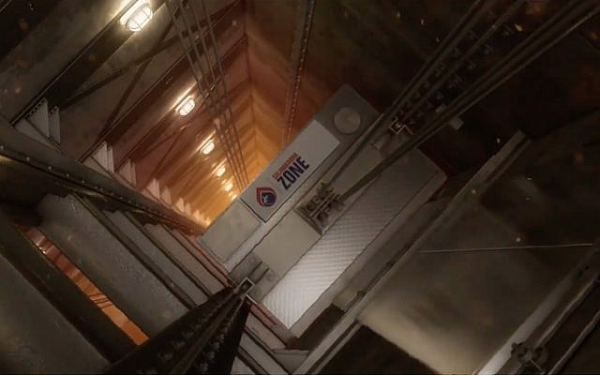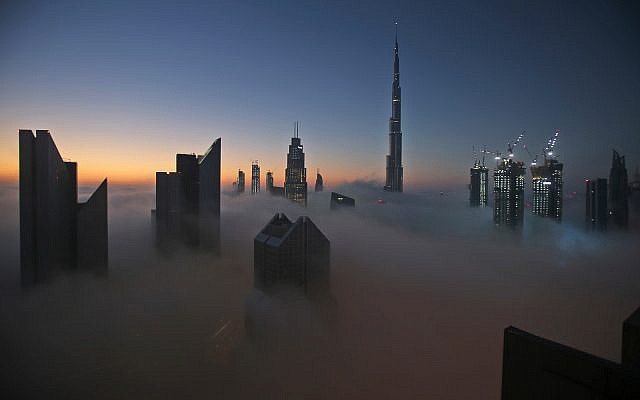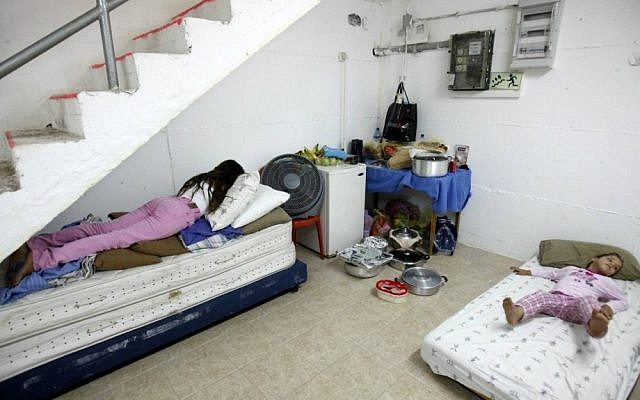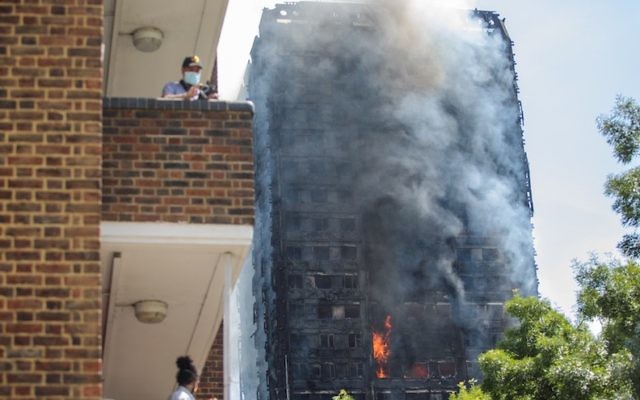
Israeli Startup Develops Tech To Turn Elevators Into Moving Safe Rooms During Emergencies
Salamandra Zone’s B-Air system provides clean, cool air to elevator cabs during fires, keeping residents alive and safe
Elevators, long viewed as death traps in a fire, could be people’s best escape from a burning building, according to Israeli startup Salamandra Zone.
The company’s flagship product, the B-Air System, converts toxic gases into breathable air and pushes that air into elevators, potentially turning the cabs into moving safe rooms, allowing people to take refuge and flee from catastrophic fires in tall buildings.
Firefighting and public safety practices have not kept up, said Salamandra Zone CEO Marat Maayan.

Maayan, 49, spent 27 years in the IDF dealing with bomb disposal, chemical terror, de-mining and maintaining critical infrastructure. After the Second Lebanon War in 2006, he began researching how military and civilian authorities in a city like Tel Aviv would react in a catastrophic event. He saw that, in the last 100 years, tall buildings had essentially become vertical streets, and that firefighting practices had not evolved. The last major safety upgrade for tall buildings was the introduction of sprinklers around 35 years ago, Maayan said. Automatic sprinklers could be retrofitted to work in existing buildings and significantly decreased the risk of fire breaking out. Maayan began looking for a similar solution for people trapped in tall, burning buildings.
“The idea of trying to create something that’s part of the infrastructure wasn’t only from looking at the example of the sprinklers, but was coming from something much more Israeli — the safe room in your apartment,” Maayan said.

All new Israeli residences are required to have a safe room where residents can take shelter from chemical and ballistic attacks, Maayan said.
“I was looking to take that concept and take it to a much bigger problem that’s relevant all over the world, which is fires,” he said.
He initially aimed to design a safe room for fires, until he met representatives from an elevator company at a conference in Shanghai, who asked him about fire-proofing elevators.
Despite the widespread notion that elevators cannot be used in a fire, most of the technical issues threatening elevators in a fire have been solved, Maayan said. Firefighters equipped with gas masks already use elevators to reach high floors during a fire. Basically, modern elevators can continue functioning during fires.
The problem is smoke and toxic gases, which account for most fatalities during fires. Most of the 72 victims of the 2017 Grenfell Tower fire in London, England died on the upper floors of the building, for example, and experts say poisonous gases likely played a major role in their deaths. The building’s staircase reportedly filled with smoke so dense that firefighters could not see several inches in front of themselves.

Salamandra Zone’s B-Air System treats these toxic gases and pushes breathable air into the elevator. The small box unit can be fitted onto the top of existing elevator cabs. It converts dangerous gases to air in nanoseconds, cools the air to a safe temperature, and pushes the air into the cab to prevent untreated gases from seeping in.
Maayan compares the liquid to ink cartridges for a printer, where a few colors can mix to produce hundreds of different hues. Similarly, the liquids in their cartridges can be mixed in many ways to neutralize whatever gases are in the elevator shaft.
Like sprinklers, the B-Air can be retrofitted to existing buildings.
The company plans to market the product to hospitals and retirement homes. Roughly 30 percent of people need assistance in evacuations, making an elevator escape option all the more important, Maayan said.
Three months ago, the company carried out successful tests of the product in Chicago, Maayan said.
The product will be sold first in the US, China, and Israel, Maayan said. He expects the device to hit markets around the end of 2020.
The company’s second product, the C-Air, uses the same core technology for industrial safety. The unit is designed to detect and neutralize leaks in industrial zones. It is bigger than the B-Air, and more geared towards neutralizing toxic gases than producing breathable oxygen. It is currently treating emissions in a factory producing military equipment in northern Israel in a pilot program. Maayan expects the C-Air to be ready for commercial sale in less than a year.
Source: The Times of Israel